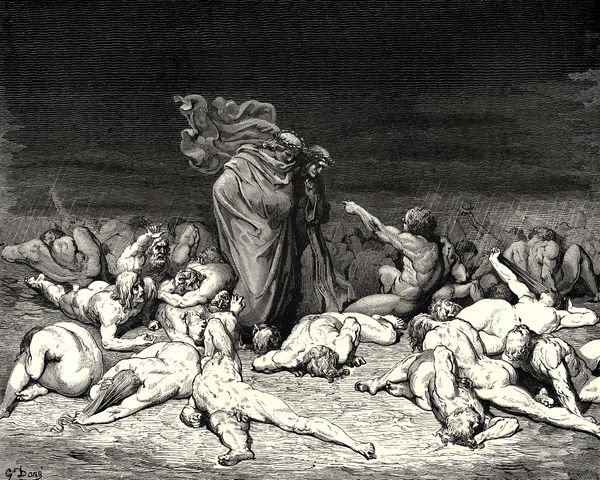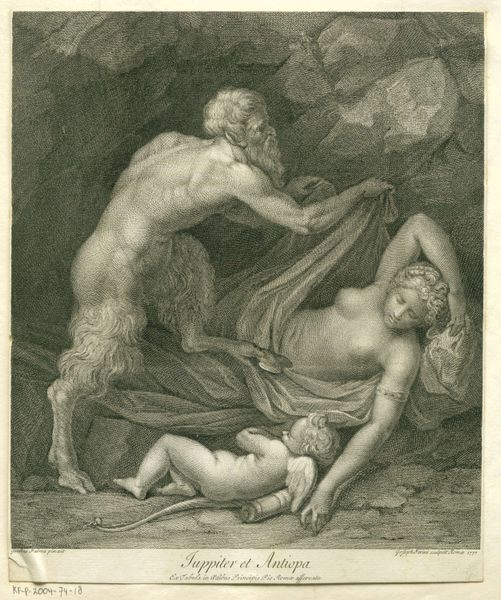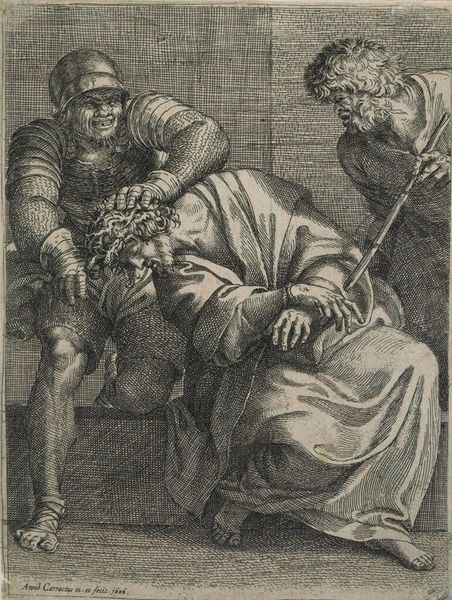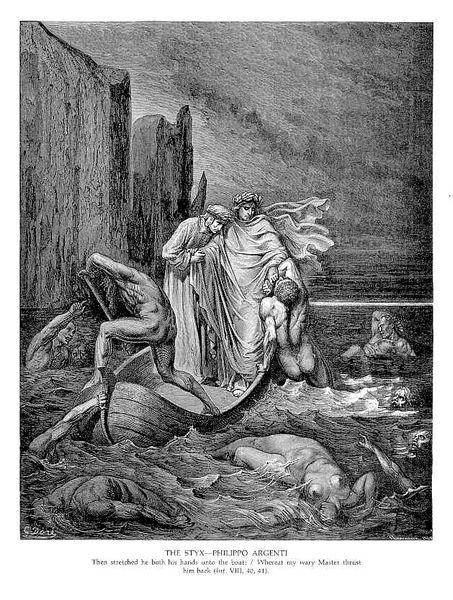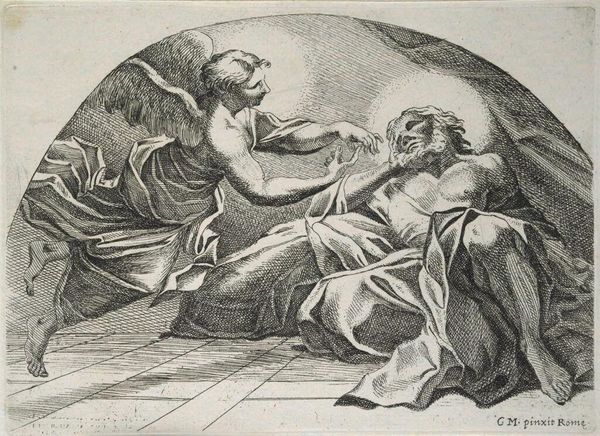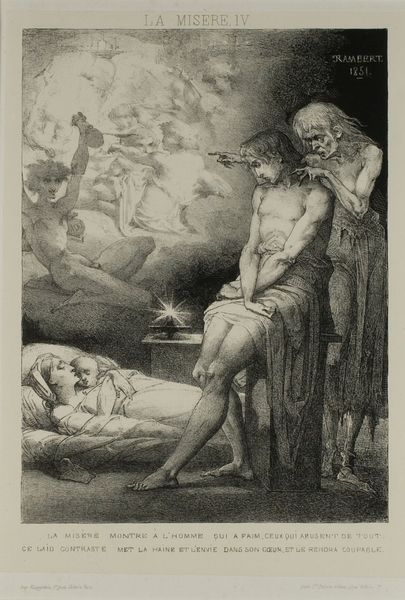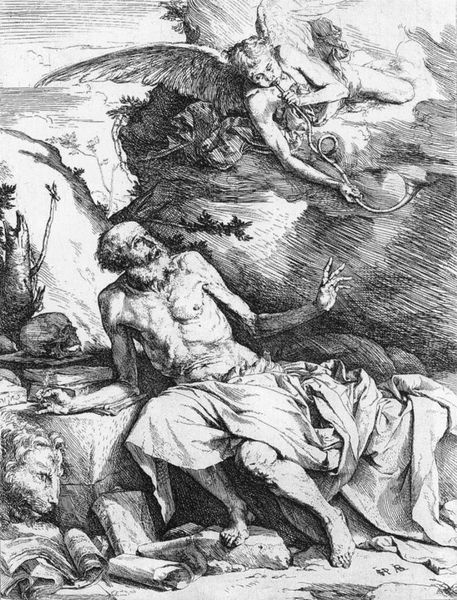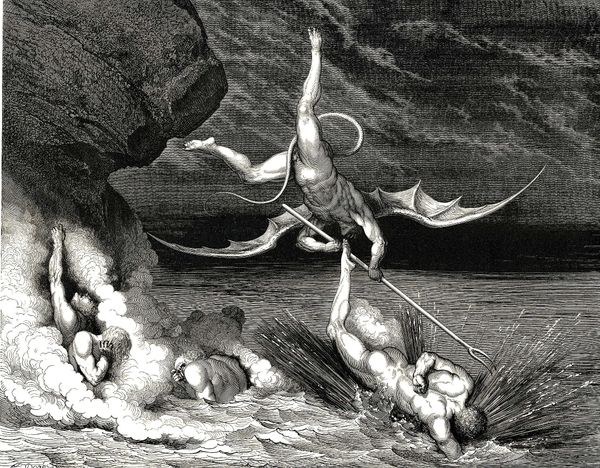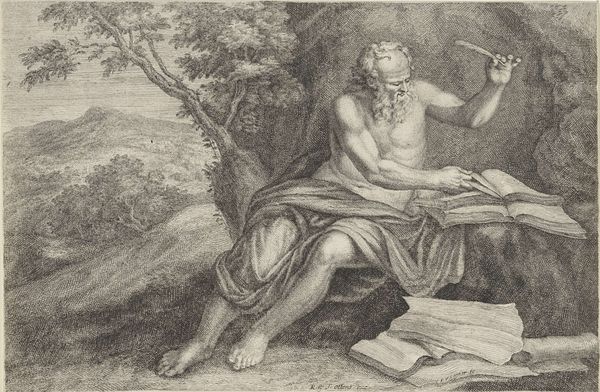
drawing, engraving
#
drawing
#
narrative-art
#
charcoal drawing
#
figuration
#
romanticism
#
history-painting
#
engraving
Copyright: Public domain
Gustave Doré created this plate illustrating Canto 31 of Dante’s Inferno using engraving techniques. The composition is dominated by massive figures, giants, who are chained and stand as looming vertical masses. The light contrasts sharply with the dark, accentuating their muscular forms and the rough texture of their skin. Doré’s use of line and shadow creates a sense of confinement and oppression. The giants are symbols of primal force, rendered impotent through their bondage. This reflects a broader theme in structuralist thought, where power structures define and constrain individuals. Notice how Dante and Virgil are rendered as diminutive figures, emphasizing the giants' overwhelming presence. This illustrates a clear power dynamic. The chains and stone blocks signify not only physical restriction but also the rigid, inescapable structures of the infernal realm. By contrasting the vulnerability of Dante with the imposing size of the giants, Doré prompts a semiotic reading of power, punishment, and the human condition. This dynamic challenges the viewer to consider the implications of size and scale on our understanding of authority and suffering.
Comments
No comments
Be the first to comment and join the conversation on the ultimate creative platform.


